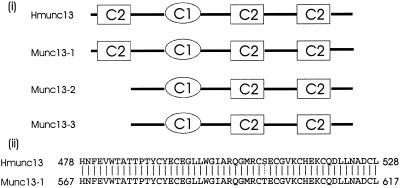In earlier work, we discovered that nerve growth factor (NGF) induced expression of the mRNA transcript encoding the metalloproteinase transin/stromelysin in PC12 cells. Transin was discovered, furthermore, to be a “late” gene product whose expression correlated with neurites extension.
In this examine, numerous points of the NGF intracellular signaling pathway in PC12 cells are investigated. We present that the protein kinase inhibitor staurosporine, however not numerous different kinase inhibitors, particularly blocked the NGF induction of transin.
Preliminary characterization of this staurosporine-sensitive kinase recommend that it doesn’t correspond to a tyrosine kinase, nor numerous serine kinases, and that it’s concerned each on the transcriptional and posttranscriptional ranges of transin
Antibodies directed in opposition to nerve growth factor (NGF) immunoprecipitate a tyrosine kinase exercise from NGF-treated PC12 rat pheochromocytoma cells. Based on a number of standards, this exercise has been correlated with the high-affinity and never the low-affinity NGF-receptor complicated.
Role of protein kinase exercise in apoptosis
The in vitro kinase exercise and the tyrosine phosphorylation of the high-affinity complicated may be blocked by an agent that inhibits NGF (and never epidermal growth factor)-induced tyrosine phosphorylation in PC12 cells, in addition to NGF-induced neuronal differentiation of PC12 cells. These observations recommend that the high-affinity NGF-receptor complicated is a substrate of tyrosine kinase exercise. Phosphorylation reactions by the complicated, carried out within the absence of added substrate.
A structural evaluation of the rat low-affinity nerve growth factor (NGF) receptor was undertaken to outline the NGF binding area. Mutant NGF receptor DNA constructs had been expressed in mouse fibroblasts or COS cells, and the flexibility of the mutant receptor to bind NGF was assayed. In the primary mutant, all however 16 amino acid residues of the intracellular area of the receptor had been eliminated. This receptor certain NGF with a Kd corresponding to that of the wild-type receptor.
A second mutant contained solely the 4 cysteine-rich sequences from the extracellular portion of the protein. This mutant was expressed in COS cells and the resultant protein was a secreted soluble type of the receptor that was capable of bind NGF.
Two N-terminal deletions, through which both the primary cysteine-rich sequence of the primary and a part of the second cysteine-rich sequences had been eliminated, certain NGF. However, a mutant missing all 4 cysteine-rich sequences was unable to bind NGF. These outcomes present that the 4 cysteine-rich sequences of the NGF receptor comprise the NGF binding area.
The impact of age on dendrites within the rat superior cervical ganglion.
Intracellular injection of a biotinylated probe in fastened superior cervical ganglia adopted by confocal microscopy was used to research the consequences of age on the dendritic arborisation of sympathetic neurons in rats aged 6 wk (younger grownup), 7 months (totally grown grownup) and 24 months (aged).
In accordance with different research appreciable dendritic growth was noticed throughout postnatal growth. However, in previous age dendritic growth didn’t proceed, and important atrophy was noticed. Quantitation of neuronal morphology confirmed important reductions in soma measurement, complete dendritic size, variety of department factors and complete space of dendritic arborisation in previous age. Unexpectedly, important reductions within the numbers of major dendrites had been noticed.
Increased Protein Tyrosine Phosphorylation in Apoptotic Neural Cell Death Due to Microtubule Perturbations
We studied the consequences of pure ceramide and a collection of ceramide analogs with completely different acyl chain lengths on the exercise of rat mind protein kinase C (PKC) and on the construction of bovine liver phosphatidylcholine (BLPC)/dipalmitoylphosphatidylcholine (DPPC)/dipalmitoylphosphatidylserine (DPPS) (3:1:1 molar ratio) bilayers utilizing (2)H-NMR and particular enzymatic assays within the absence or presence of seven.5 mol % diolein (DO). Only a slight activation of PKC was noticed upon addition of the short-chain ceramide analogs (C(2)-, C(6)-, or C(8)-ceramide); pure ceramide or C(16)-ceramide had no impact. In the presence of seven.5 mol % DO, pure ceramide and C(16)-ceramide analog barely attenuated DO-enhanced PKC exercise. (2)H-NMR outcomes demonstrated.
